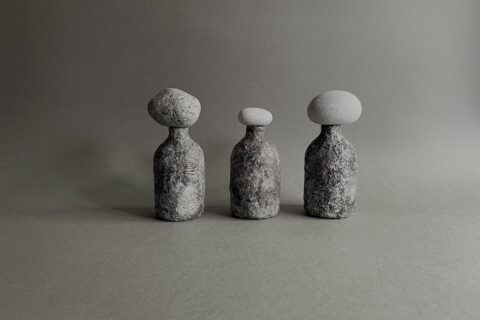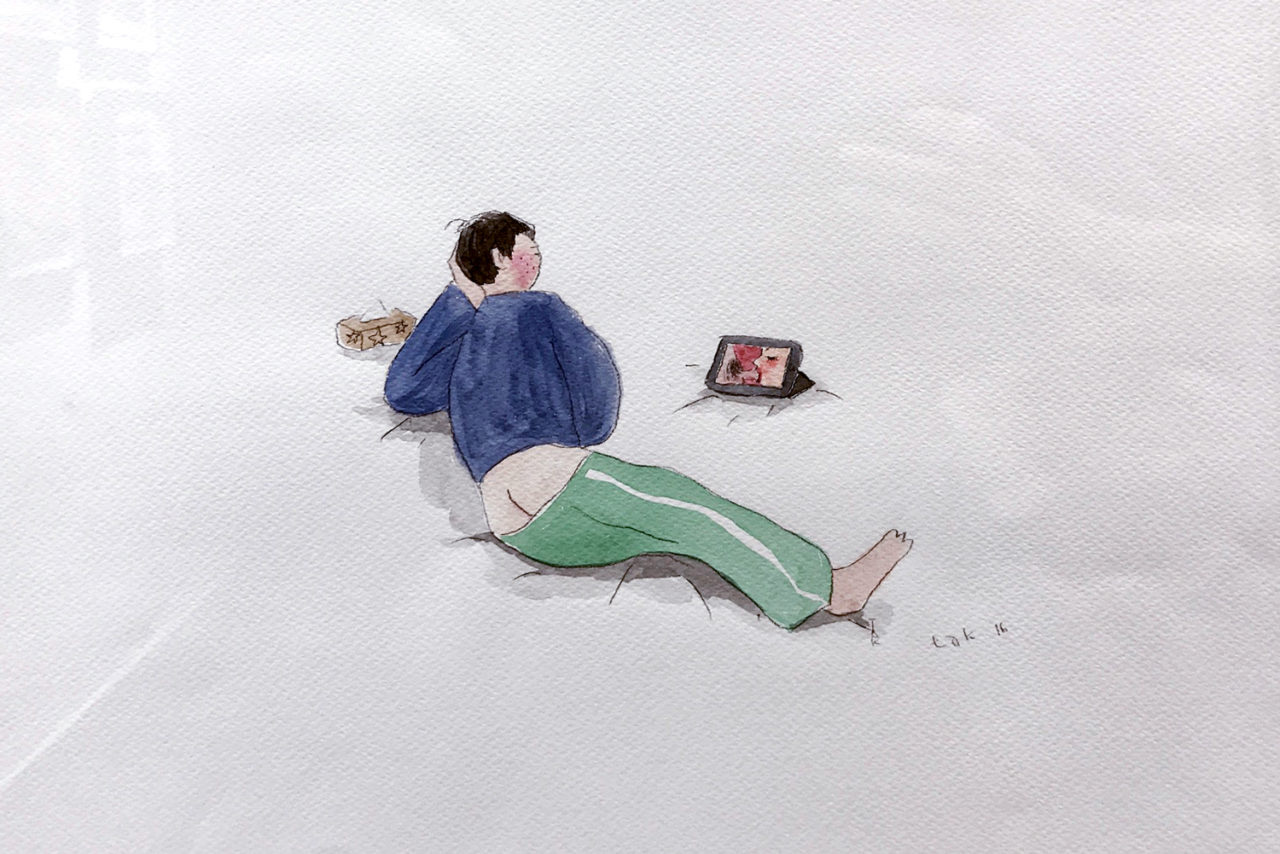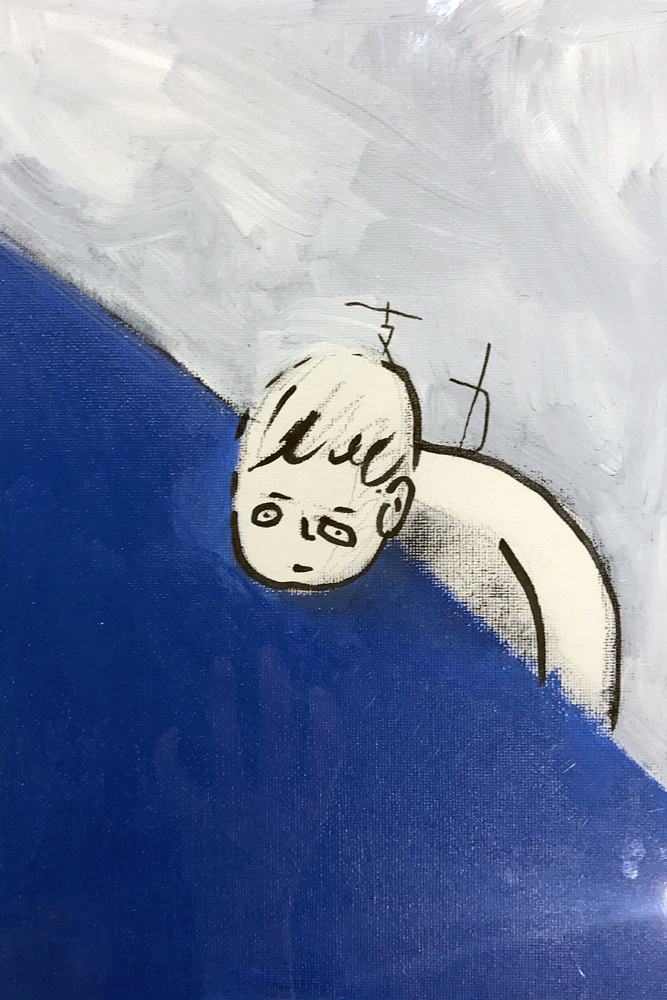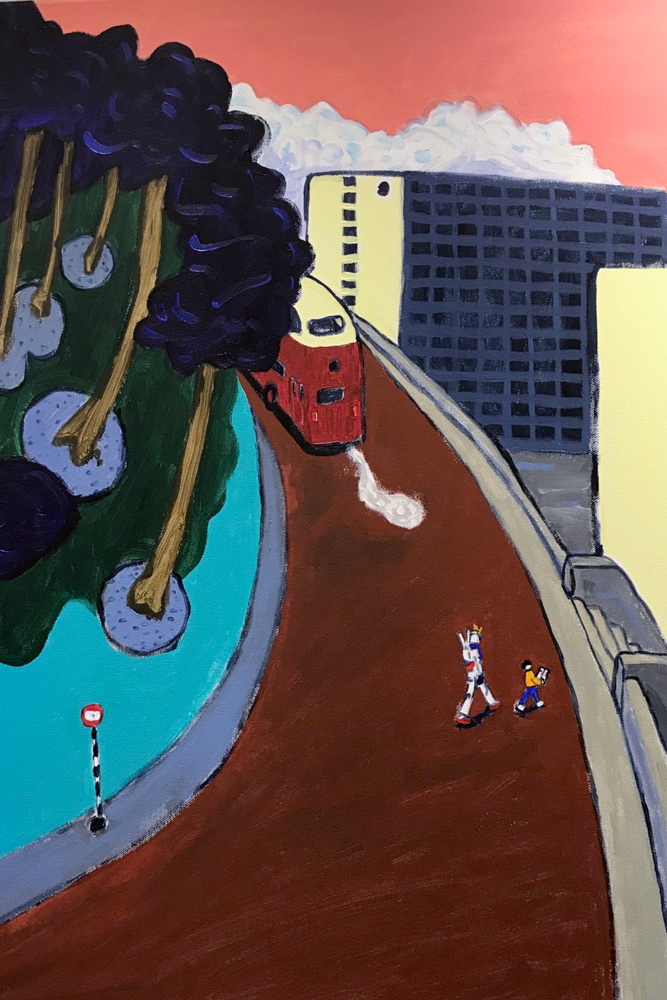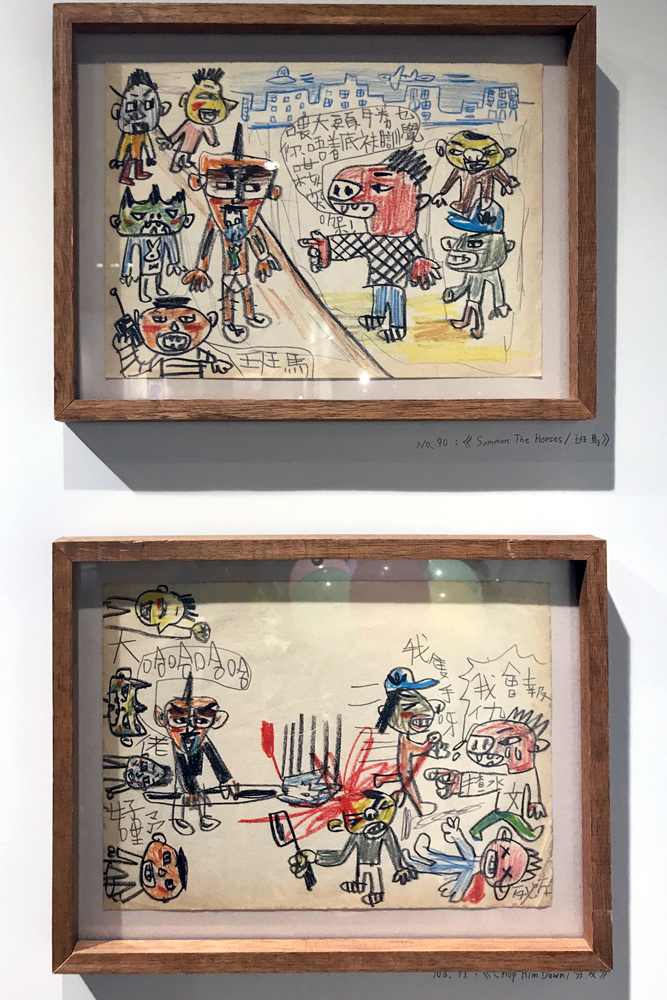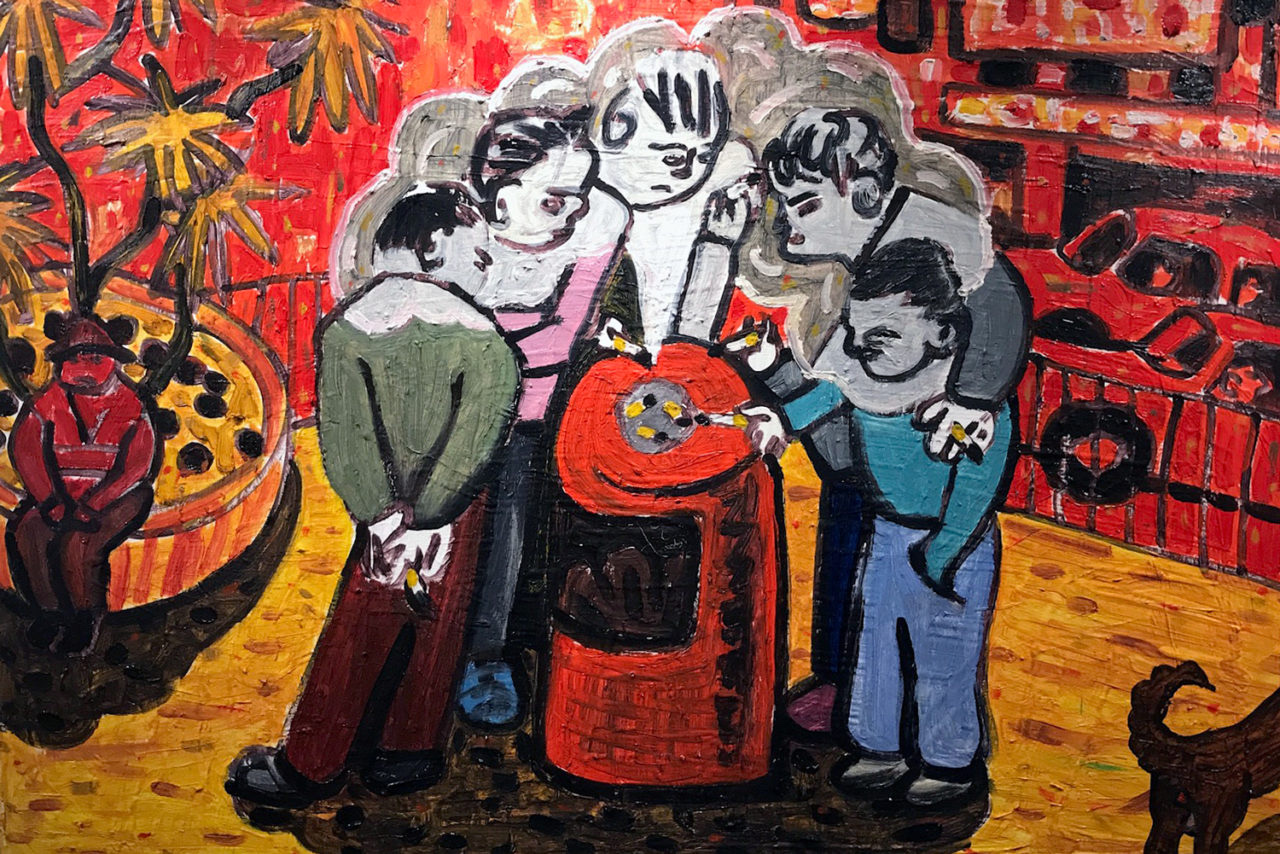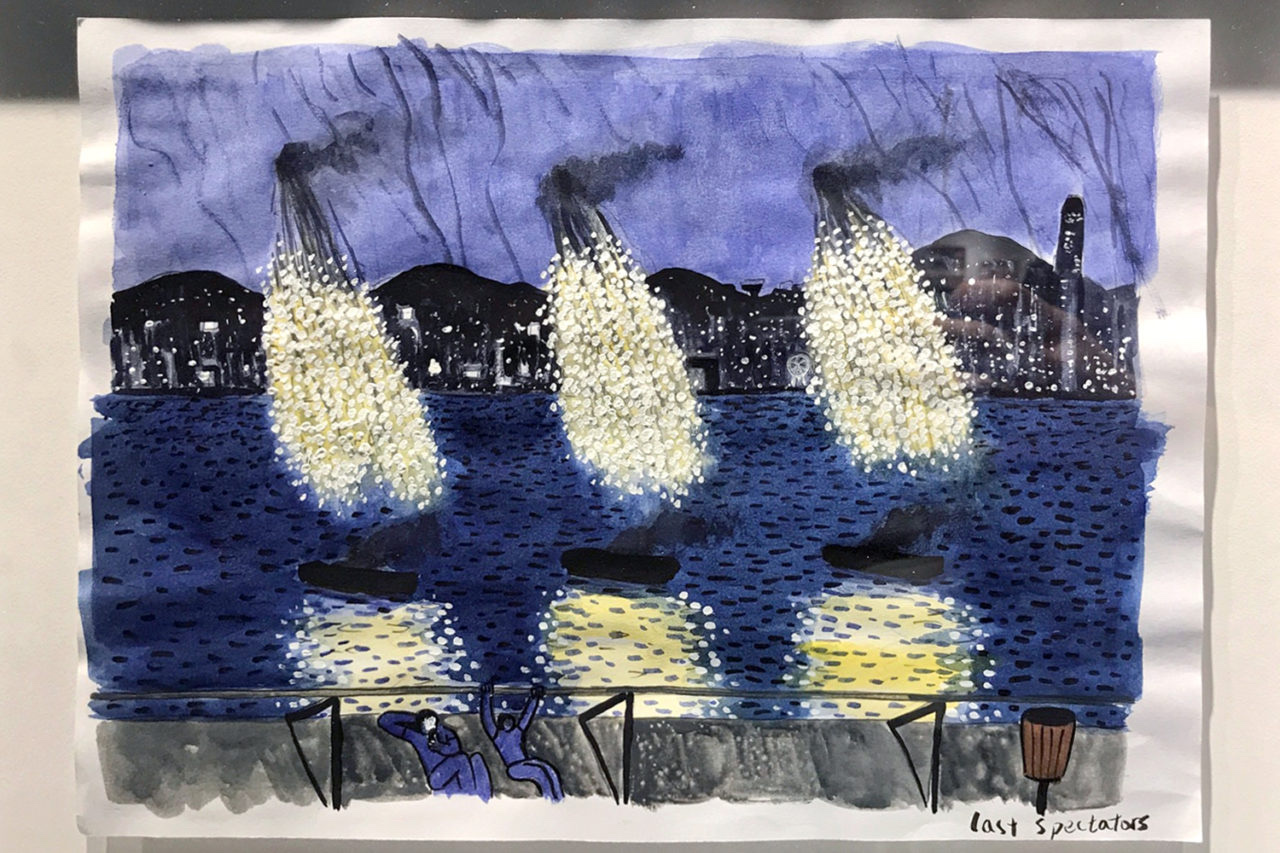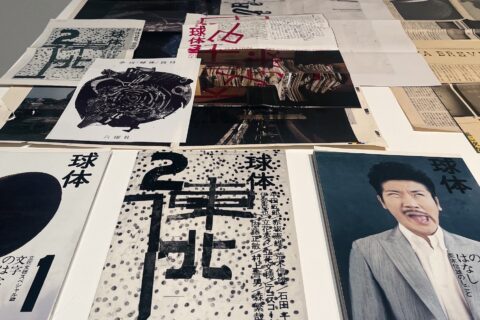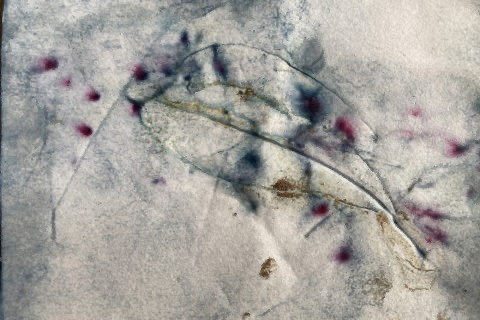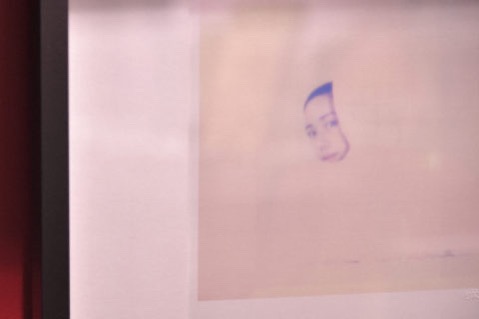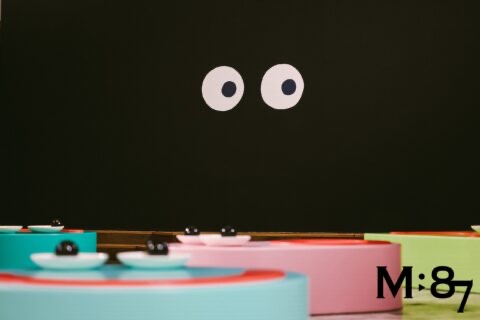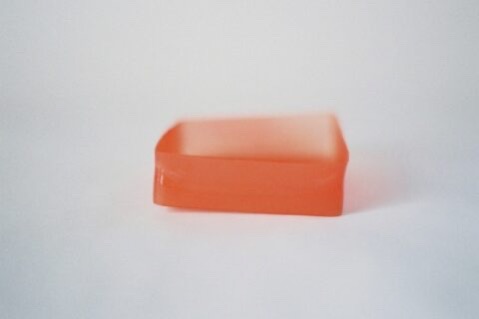或許因為奈良美智曾經為楊學德在京都策劃展覽,朋友這樣對照二人的作品:「奈良美智那個大頭女孩,斜視大眼晴中沒有半點童真,時而憤怒、時而悲傷。楊學德筆下無論市井、麻甩還是香港景物都色彩繽紛,卻總有點點痛惜舊日的情懷。兩者都是最以甜美描繪哀愁。」我覺得楊學德的畫不需刻意分析理解,也不用跟誰的作品比照,他畫中的隨意性才是最動人之處。
展覽〈小包圍〉包含了楊學德三百多幅的作品,其中很多都是小幅紙本。三百多幅中有他一貫的麻甩,也是對城市的想像及詩意。有像極小學時男生們畫的圖畫,就是男生們「蝦蝦霸霸」;男孩帶著高達過馬路,巴士及屋邨的模樣都屬於過去;維港上大大小小的山丘,不知是泥頭山或是填海山;只有在這個城市角落或後巷中才見到的「圍爐」奇景;還有獅子山換了貓仔山。在這裡土生土長的,會被楊學德畫的勾起笑淚夾雜的感受。無論是隨手拈來的城市景貌,或者是孩子的種種想像,大抵都是已過去、令人懷念及惋惜的。
楊學德畫過插畫,也曾在廣告、設計公司任職,工作講求焦點及傳達訊息的準確,充滿計算。換個畫家的身份,畫畫的時候他便沒有這個計算考量,顏色、比例、構圖、景物都隨心而來。於是畫中的山頭不合比例,而看來熟悉的建築物卻被置於不知名的空間。〈小包圍〉的展覽形式都很隨意,紙本手稿像率性地躺放展台上,或拼合掛在牆上。
假如繪畫是畫家將情緒內化,然後在畫布上表現出來的一個過程,楊學德那種市井加上想像,在內化之後變成屬於這個城市中獨有的詩意,觀眾在這些看來熟悉卻是滿有想像的畫作中內心被觸動著。
Perhaps because Yoshitomo Nara once organized an exhibition for Yeung Hok Tak in Kyoto, a friend of mine offers the following comparison of their works: “The big-headed girl drawn by Yoshitomo Nara has a pair of slanting eyes that lack innocence, looking either angry or sad. However, whatever drawn by Yeung Hok Tak, from common people, boorish men to views and objects in Hong Kong, are always colorful but tinged with a pang of nostalgia for the olden days. Both attempt to depict sadness through sweetness.” I feel that there is no need to try and analyze or understand Yeung’s drawings nor to compare or contrast them with others’. Arbitrariness is the most moving quality of his drawings.
The exhibition “Round you up” features more than three hundreds pieces by Yeung, among which many are small-dimension paper drawings. The three-hundred-plus drawings showcase his signature “ma-lak” or boorish men style, as well as his imagination and poetic thoughts towards the city. There are drawings closely resembling those sketched by primary school boys, showcasing boys’ being school bullies; a boy carrying a Gundam crossing the street against the backdrop of buses and housing estates from the olden days; hills big and small above Victoria Harbor, which one cannot tell if they are soil or landfill dumps; the extraordinary sight of “wai-lo,” or people smoking at street corners or back alleys that can only be seen in this city; as well as Lion Rock being replaced by Unicorn Ridge. His drawings will bring laughters and tears to those born and raised here. Whether it is just a random capture of a city view or a range of kids’ imaginations, they are mostly a thing of the past, thereby stirring up feelings of nostalgia and regret.
Yeung has done illustrations before, and he has also worked for advertising and design companies. These jobs demand a focus and precision in getting messages across, and therefore are full of calculations. Having switched his role to a painter, he no longer needs such calculations and considerations when he draws, thereby enabling him to do as he pleases when it comes to colors, proportion, framing or the selection of views and objects. Therefore, the hills depicted in his drawings are not in the right proportion, and familiar buildings are placed in an unknown space. The form of the exhibition is also arbitrary, with paper drawings and manuscripts randomly lying on exhibition booths or combined together and hung on the wall.
If painting is a process in which artists internalize his emotions and then present them on canvases, then Yeung’s depiction of the common folks, combined with his image, has transformed into a poetic quality unique to this city. These familiar but highly imaginative pieces touch the heart of viewers.
